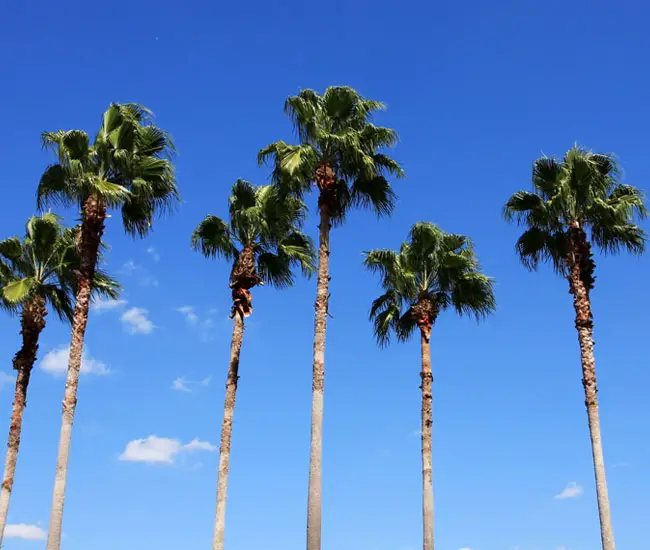
Nothing else gives a landscape that “tropical” feels quite like palm trees. Florida Palm Trees thrive in warm, sunny climates. There are a lot of challenges to maintaining a healthy and prosperous palm tree. It’s important for the homeowner to understand all these challenges and obtain the tools necessary to overcome them.
When selecting a palm tree for your property, there are five key factors to consider: soil quality, size, temperature, sunlight, and water.
1. Selecting the Right Soil for Palm Trees
Soil quality stands as the paramount factor in fostering healthy palm tree growth. When purchasing a palm tree, inquire about the nutrient and water requirements specific to that palm species, as these needs determine the optimal soil conditions. Additionally, fertilization plays a vital role in palm tree care.
Different palm tree varieties demand specially formulated fertilizers tailored to their specific needs. If your soil lacks nutrients, you can fortify it with either organic or inorganic fertilizers. When purchasing fertilizer, opt for high-quality products with a slow-release formula to prevent them from being washed away by rain.
One product I personally recommend is Jobe’s Palm Fertilizer. It excels at promoting root development and long-term vitality across various palm types. It won’t harm the roots and provides all the necessary nutrients your palm trees require.
2. Consider the Palm Tree’s Size
Size is another critical consideration. The small palm tree you bring home today can swiftly grow into a towering giant, with some palm species reaching heights of 50 feet or more.
If planted too close to other structures or power lines, they can potentially overpower your property and create disruptions.
3. Ideal Temperature for Palm Trees
Palm trees predominantly flourish in tropical regions, coastal areas, deserts, and generally warm climates. Tropical zones, characterized by high temperatures, humidity, and consistent rainfall, provide the perfect environment for a wide variety of palm trees.
Given their preference for warmth, even brief exposure to frost can weaken a palm tree, rendering it susceptible to pests, diseases, or even immediate death. I recently published an article on how to care for cold-damaged palm trees.
A handful of palm species, such as the Queen palm and Canary Island date palm, are considered “cold-hardy,” able to withstand temperatures no lower than 20 degrees. Nonetheless, the range of areas suitable for palm cultivation remains somewhat limited.
Some exceptionally cold-hardy palms, such as Windmill and Needle Palms, can tolerate temperatures dipping below 10°F. If you reside in a colder climate and desire a stunning palm tree in your garden, check your climate zone first—you might discover a cold-hardy palm species suitable for your region.
4. Evaluate Sunlight Exposure
The amount of sunlight your palm tree receives during the day is crucial. Surprisingly, not all palm tree varieties possess the same level of sun tolerance. Some prefer partial shade over full sun exposure throughout the day.
5. Watering Palm Trees
While we often associate palm trees with arid desert landscapes, they are typically found near abundant and consistent water sources in the wild. If you plan to plant a palm tree on your property, ensure it receives an adequate supply of water. Be prepared to water a newly transplanted palm tree frequently as it acclimates to its new environment.
As you can see, the requirements of palm trees vary by species. Before planting one, carefully consider the specific needs of the palm type to ensure you can meet its requirements and enable it to flourish to its full potential.
Lastly, I’ve come across an excellent beginner’s resource called “All About Palms.” This book showcases 200 different palm species with stunning photos and offers step-by-step guidance on planting, growing, and caring for palm trees. It’s an ideal companion for homeowners with a passion for palm trees.


This looks like the palm tree I’m looking for but smaller. Where can I purchase it and what’s the price?What is this called?